
eBook - ePub
Advanced Vehicle Technology
Heinz Heisler
This is a test
Buch teilen
- 656 Seiten
- English
- ePUB (handyfreundlich)
- Über iOS und Android verfügbar
eBook - ePub
Advanced Vehicle Technology
Heinz Heisler
Angaben zum Buch
Buchvorschau
Inhaltsverzeichnis
Quellenangaben
Über dieses Buch
This eagerly awaited second edition of Heinz Heisler's Advanced Vehicle Technology is a comprehensive and thorough description of vehice bodies and components.
The second edition has been rigorously updated to provide additional material on subjects such as antilock braking, vehicle aerodynamics, tire tread design advances, electronically controlled anti-vibration engine mountings and transport refrigeration. Around 100 new diagrams have been included to complement the text.
Advanced Vehicle Technology 2nd edition's depth of coverage, detailed illustrations and fluent and precise style are the outstanding features in this high quality student text.
- More quality artwork has been added to enhance and add value to the explanation given in the text
- 16 key topics have been updated to bring this 2nd edition in line with current technology
- Fully international in scope, reflecting the nature of contemporary vehicle engineering
Häufig gestellte Fragen
Wie kann ich mein Abo kündigen?
Gehe einfach zum Kontobereich in den Einstellungen und klicke auf „Abo kündigen“ – ganz einfach. Nachdem du gekündigt hast, bleibt deine Mitgliedschaft für den verbleibenden Abozeitraum, den du bereits bezahlt hast, aktiv. Mehr Informationen hier.
(Wie) Kann ich Bücher herunterladen?
Derzeit stehen all unsere auf Mobilgeräte reagierenden ePub-Bücher zum Download über die App zur Verfügung. Die meisten unserer PDFs stehen ebenfalls zum Download bereit; wir arbeiten daran, auch die übrigen PDFs zum Download anzubieten, bei denen dies aktuell noch nicht möglich ist. Weitere Informationen hier.
Welcher Unterschied besteht bei den Preisen zwischen den Aboplänen?
Mit beiden Aboplänen erhältst du vollen Zugang zur Bibliothek und allen Funktionen von Perlego. Die einzigen Unterschiede bestehen im Preis und dem Abozeitraum: Mit dem Jahresabo sparst du auf 12 Monate gerechnet im Vergleich zum Monatsabo rund 30 %.
Was ist Perlego?
Wir sind ein Online-Abodienst für Lehrbücher, bei dem du für weniger als den Preis eines einzelnen Buches pro Monat Zugang zu einer ganzen Online-Bibliothek erhältst. Mit über 1 Million Büchern zu über 1.000 verschiedenen Themen haben wir bestimmt alles, was du brauchst! Weitere Informationen hier.
Unterstützt Perlego Text-zu-Sprache?
Achte auf das Symbol zum Vorlesen in deinem nächsten Buch, um zu sehen, ob du es dir auch anhören kannst. Bei diesem Tool wird dir Text laut vorgelesen, wobei der Text beim Vorlesen auch grafisch hervorgehoben wird. Du kannst das Vorlesen jederzeit anhalten, beschleunigen und verlangsamen. Weitere Informationen hier.
Ist Advanced Vehicle Technology als Online-PDF/ePub verfügbar?
Ja, du hast Zugang zu Advanced Vehicle Technology von Heinz Heisler im PDF- und/oder ePub-Format sowie zu anderen beliebten Büchern aus Tecnologia e ingegneria & Ingegneria meccanica. Aus unserem Katalog stehen dir über 1 Million Bücher zur Verfügung.
Information
1
Vehicle Structure
1.1 Integral body construction
The integral or unitary body structure of a car can be considered to be made in the form of three box compartments; the middle and largest compartment stretching between the front and rear road wheel axles provides the passenger space, the extended front box built over and ahead of the front road wheels enclosing the engine and transmission units and the rear box behind the back axle providing boot space for luggage.
These box compartments are constructed in the form of a framework of ties (tensile) and struts (compressive), pieces (Fig. 1.1(a & b)) made from rolled sheet steel pressed into various shapes such as rectangular, triangular, trapezium, top-hat or a combination of these to form closed box thin gauge sections. These sections are designed to resist direct tensile and compressive or bending and torsional loads, depending upon the positioning of the members within the structure.
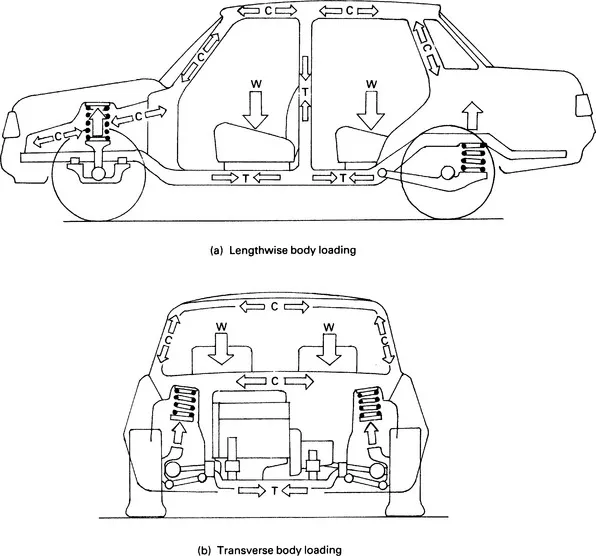
Fig. 1.1 (a and b) Structural tensile and compressive loading of car body
1.1.1 Description and function of body components (Fig. 1.2)
The major individual components comprising the body shell will now be described separately under the following subheadings:
1. Window and door pillars
2. Windscreen and rear window rails
3. Cantrails
4. Roof structure
5. Upper quarter panel or window
6. Floor seat and boot pans
7. Central tunnel
8. Sills
9. Bulkhead
10. Scuttle
11. Front longitudinals
12. Front valance
13. Rear valance
14. Toe board
15. Heel board
Window and door pillars (Fig. 1.2(3, 5, 6, and 8)) Windowscreen and door pillars are identified by a letter coding; the front windscreen to door pillars are referred to as A post, the centre side door pillars as BC post and the rear door to quarter panel as D post. These are illustrated in Fig. 1.2.
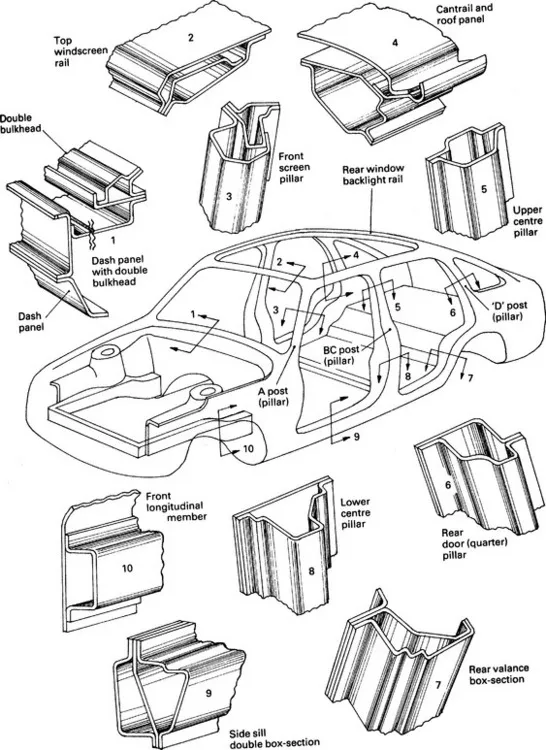
Fig. 1.2 Load bearing body box-section members
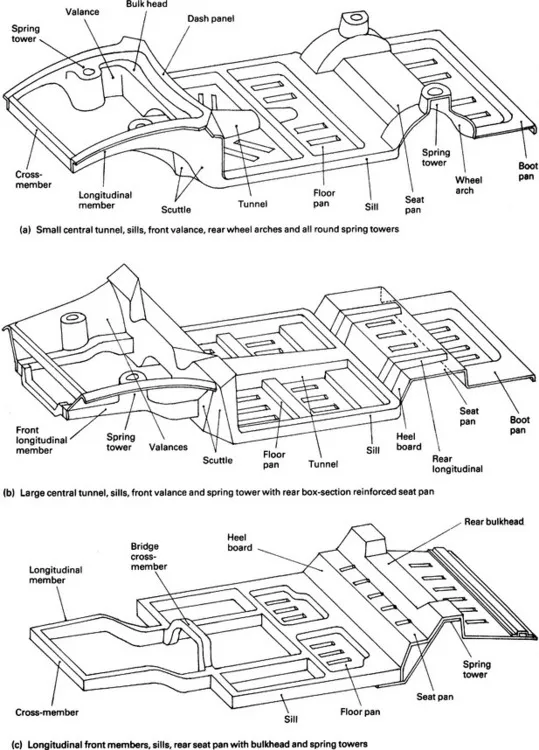
Fig. 1.3(a–c) Platform chassis
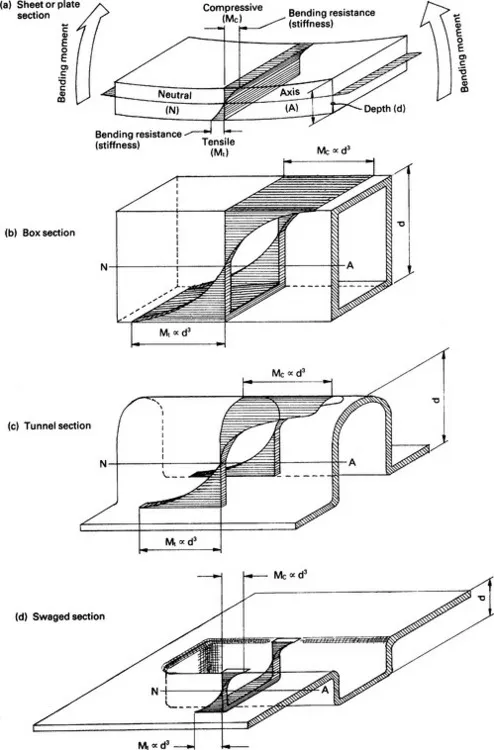
Fig. 1.5 Bending resistance for various sheet sections
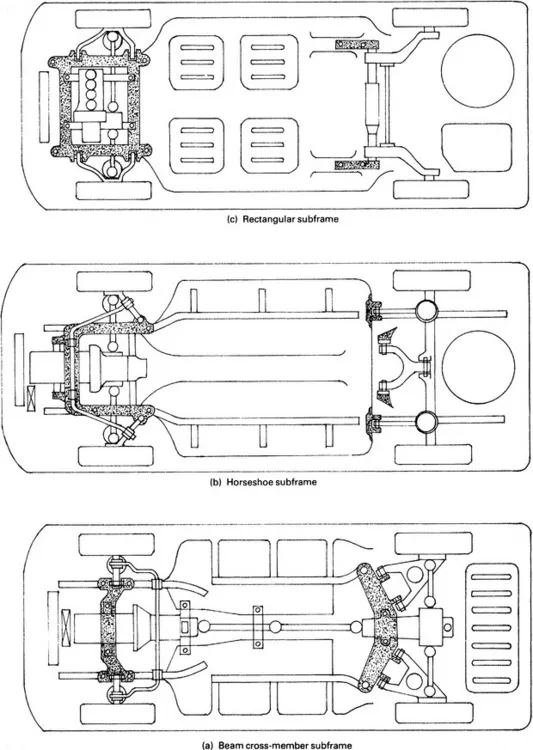
Fig. 1.6 (a–c) Body subframe and underfloor structure

Fig. 1.8 Collision body safety
These pillars form the part of the body structure which supports the roof. The short form A pillar and rear D pillar enclose the windscreen and quarter windows and provide the glazing side channels, whilst the centre BC pillar extends the full height of the passenger compartment from roof to floor and supports the rear side door hinges. The front and rear pillars act as struts (compressive members) which transfer a proportion of the bending effect, due to underbody sag of the wheelbase, to each end of the cantrails which thereby become reactive struts, opposing horizontal bending of the passenger compartment at floor level. The central BC pillar however acts as ties (tensile members), transferring some degree of support from the mid-span of the cantrails to the floor structure.
Windscreen and rear window rails (Fig. 1.2(2)) These box-section rails span the front window pillars and rear pillars or quarter panels depending upon design, so that they contribute to the resistance opposing transverse sag between the wheel track by acting as compressive members. The other function is to support the front and rear ends of the roof panel. The undersides of the rails also include the glazing channels.
Cantrails (Fig. 1.2(4)) Cantrails are the horizontal members which interconnect the top ends of the vertical A and BC or BC and D door pillars (posts). These rails form the side members which make up the rectangular roof framework and as such are subjected to compressive loads. Therefore, they are formed in various box-sections which offer the greatest compressive resistance with the minimum of weight and blend in with the roofing. A drip rail (Fig. 1.2(4)) is positioned in between the overlapping roof panel and the cantrails, the joins being secured by spot welds.
Roof structure (Fig. 1.2) The roof is constructed basically from four channel sections which form the outer rim of the slightly dished roof panel. The rectangular outer roof frame acts as the compressive load bearing members. Torsional rigidity to resist twist is maximized by welding the four corners of the channel-sections together. The slight curvature of the roof panel stiffens it, thus preventing winkling and the collapse of the unsupported centre region of the roof panel. With large cars, additional cross-rail members may be used to provide more roof support and to prevent the roof crushing in should the car roll over.
Upper quarter panel or window (Fig. 1.2(6)) This is the vertical side panel or window which occupies the space between the rear side door and the rear window. Originally the quarter panel formed an important part of the roof support, but improved pillar design and the desire to maximize visibility has either replaced them with quarter windows or reduced their width, and in some car models they have been completely eliminated.
Floor seat and boot pans (Fig. 1.3) These constitute the pressed rolled steel sheeting shape to enclose the bottom of both the passenger and luggage compartments. The horizontal spread-out pressing between the bulkhead and the heel board is called the floor pan, whilst the raised platform over the rear suspension and wheel arches is known as the seat or arch pan. This in turn joins onto a lower steel pressing which supports luggage and is referred to as the boot pan.
To increase the local stiffness of these platform panels or pans and their resistance to transmitted vibrations such as drumming and droning, many narrow channels are swaged (pressed) into the steel sheet, because a sectional end-view would show a semi-corrugated profile (or ribs). These channels provide rows of shallow walls which are both bent and stretched perpendicular to the original flat sheet. In turn they are spaced and held together by the semicircular drawn out channel bottoms. Provided these swages are designed to lay the correct way and are not too long, and the metal is not excessively stretched, they will raise the rigidity o...